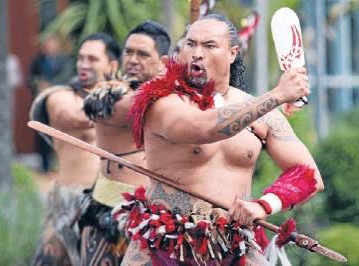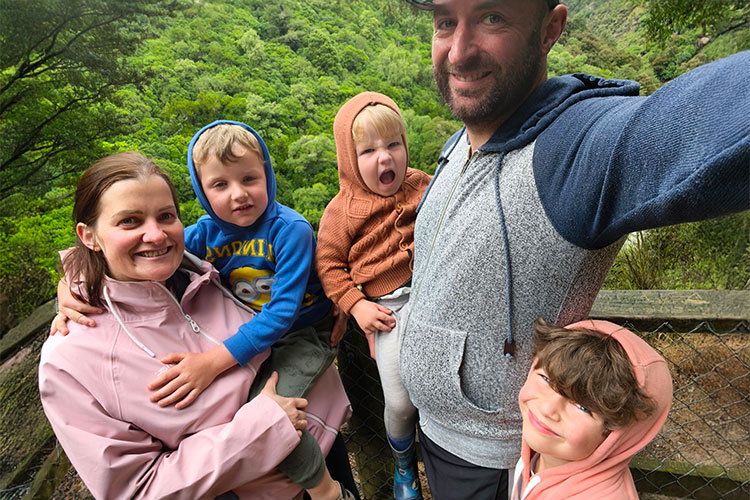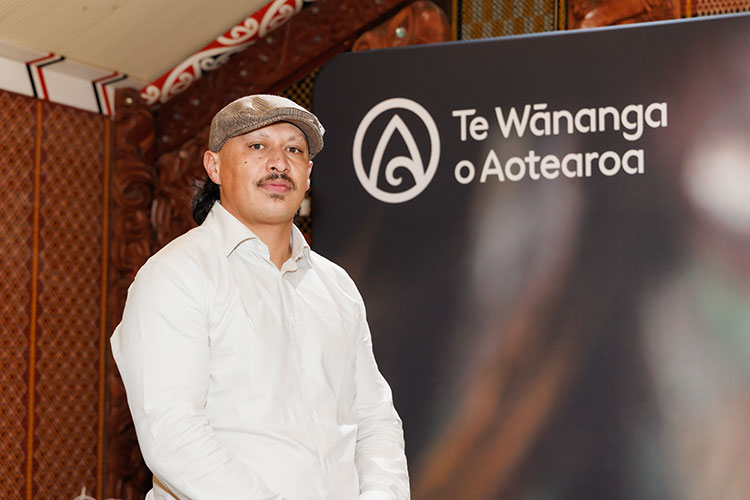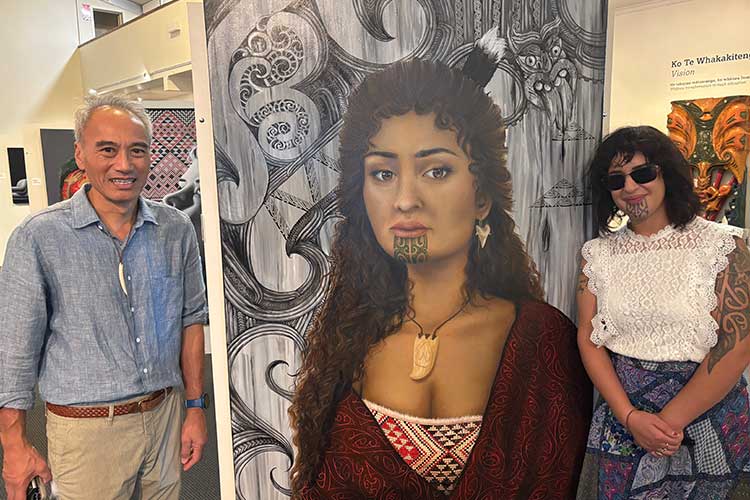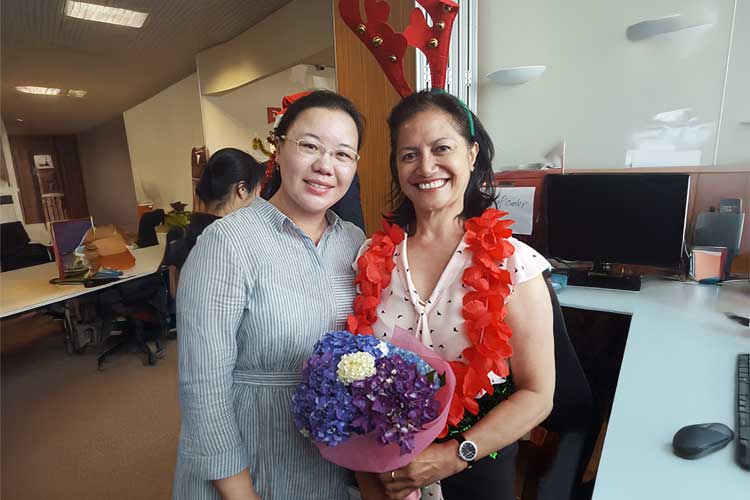Tamiaho Herangi-Searancke started formal traditional learning of mau rākau at the tender age of three from his kuia and kaumatua in the far north (Te Hokianga-nui-a-Kupe, Hokianga-whakapau-karakia).
Now, at 40, he’s a long-established kaiako in this ancient Māori martial art at Te Wānanga o Aotearoa. He’s running a new mau rākau course for the first time within Waikato-Tainui at Mangakōtukutuku in Hamilton, and is looking forward to the art’s further spread around the motu.
Tamiaho, a Masters of Arts and leader among the warrior guard of the Kingiitanga, started out his life in the far north under the watchful eye and guidance of his kuia Whina Cooper, Arana Karena (kaihautu of Ngatokimatawhaorua) and his grandfather Benjamin Titore (McLean), a 28th Māori Battalion veteran. Under these great leaders and significant others, Tamiaho quickly advanced his skills and knowledge.
At the age of five he was a kaiwero for his takiwa of Panguru and, at 14, went on to give his first mau rākau instruction session, alongside his Aunty Vicky Te Rangiataahua Wehi, during a kapa haka at Te Aute College in 1993.
By that stage, Tamiaho was well-versed in the mau rākau styles of Tainui, Maniapoto, Ngāpuhi, Ngāti Pūkenga and Te Arawa, all iwi he has whakapapa to (as well as Raukawa and Ngai Tai).
From that knowledge base, he became closely involved with the oversight of mau rākau tu taua at Te Wānanga o Aotearoa for over 10 years before getting involved in the new course being offered at a number of campuses from this year.
The 25 places on the current Mangakōtukutuku course were filled before it started and another similar-sized course next year is already full, with a waiting list of 50.
Interest comes from tauira of varying backgrounds and “it’s not only Māori wanting to learn”.
Tauira motivations for signing up can include a desire to understand their identity, “their place in the universe” and “wanting to learn these ancient skills at arms”.
“As part of all of those aspects…is learning the ancient streams of knowledge, narrative and epistemological truths that are inherent within mau rākau,” says Tamiaho.
“Rākau has a lifeforce and that force is to understand the world of light. He mauri tō te rakau, ko tona mauri he whakaaomarama as my grandfather said.” The purpose of mau rākau, he says, is to understand our ever-changing world around us and our place in it.
For the benefits it brings to practitioners, Tamiaho is keen to see the further spread wherever possible of mau rākau courses around the motu among hapu and iwi.
“Mau rākau is a big impact knowledge base because it requires a total being approach. One's mind, body and spirit are immediately infused and uplifted with wairuatanga, mātauranga, kaupapa and wānanga to its fullest senses.”
































